 This is the fifth album of traditional folk tunes which Alasdair Roberts has issued. He has also released several albums of his own compositions and it is a mark of his skill that it is pretty much impossible to tell the difference, and to know whether songs are his own imaginings or not. All share an erudite sensibility, often mixing his plaintive ghostly wailing voice (sometimes mournful, often joyous) with fine, spidery, guitar accompaniment. This new record is a deep collection, full of sweet spots, rich in detail, crystal clear in execution, and teeming with life. As usual, he reveals the multilayered meanings and nuances in even the most apparently straightforward songs, as with "The Bonny Moorhen" of Celtic folklore, and "Drimindown," a simple tale of a lost cow but also a devastating loss of a family's livelihood.
This is the fifth album of traditional folk tunes which Alasdair Roberts has issued. He has also released several albums of his own compositions and it is a mark of his skill that it is pretty much impossible to tell the difference, and to know whether songs are his own imaginings or not. All share an erudite sensibility, often mixing his plaintive ghostly wailing voice (sometimes mournful, often joyous) with fine, spidery, guitar accompaniment. This new record is a deep collection, full of sweet spots, rich in detail, crystal clear in execution, and teeming with life. As usual, he reveals the multilayered meanings and nuances in even the most apparently straightforward songs, as with "The Bonny Moorhen" of Celtic folklore, and "Drimindown," a simple tale of a lost cow but also a devastating loss of a family's livelihood.
I probably first heard and liked the music of Alasdair Roberts in August 1997 when on an English summer holiday at Woodspring Priory—or Worspring as it was known in the Middle Ages. It was founded in 1210 by William de Courtenay, grandson of Reginald Fitz-Urse, one of the assassins of St Thomas Becket. Providing an income for the locals was likely a way for de Courtenay to purge his family's ongoing guilt, and indeed St Thomas is patron saint of the priory and his martyrdom depicted on its seal.


 This latest album from Markus Popp marks yet another intriguing stylistic detour for his endlessly shapeshifting Oval project, as he delves into "an omnipresent and yet oft ill-defined, even maligned area of music and art–the romantic." The idea for this album first began as a multimedia collaboration with digital artist Robert Seidel intended for the grand opening of Frankfurt's German Romantic Museum, but the endeavor soon evolved and expanded beyond the original purpose, as the two artists "sought a more expansive definition of 'romantic,' extending outward from the museum's comprehensive survey of the 19th-century epoch in art." That said, I suspect only Popp knows how influences from literature, architecture, and visual art helped shape the album, as my ears can only process the final destination and not the journey. In the case of Romantiq, that destination feels like a series of brief vignettes/miniatures assembled from period instrumentation and filtered through Popp's fragmented and idiosyncratic vision. Given that this is an Oval album, of course, very few of the 19th-century sounds are instantly recognizable as such (aside from some occasional piano), but Popp's kaleidoscopic and deconstructed homage to the past is a characteristically compelling and intriguingly unique outlier in the Oval canon (and it is often a textural marvel as well).
This latest album from Markus Popp marks yet another intriguing stylistic detour for his endlessly shapeshifting Oval project, as he delves into "an omnipresent and yet oft ill-defined, even maligned area of music and art–the romantic." The idea for this album first began as a multimedia collaboration with digital artist Robert Seidel intended for the grand opening of Frankfurt's German Romantic Museum, but the endeavor soon evolved and expanded beyond the original purpose, as the two artists "sought a more expansive definition of 'romantic,' extending outward from the museum's comprehensive survey of the 19th-century epoch in art." That said, I suspect only Popp knows how influences from literature, architecture, and visual art helped shape the album, as my ears can only process the final destination and not the journey. In the case of Romantiq, that destination feels like a series of brief vignettes/miniatures assembled from period instrumentation and filtered through Popp's fragmented and idiosyncratic vision. Given that this is an Oval album, of course, very few of the 19th-century sounds are instantly recognizable as such (aside from some occasional piano), but Popp's kaleidoscopic and deconstructed homage to the past is a characteristically compelling and intriguingly unique outlier in the Oval canon (and it is often a textural marvel as well). I am obsessed with circles, but you don't need to share that obsession to notice and appreciate the gesture of respect here from Tujiko Noriko to Peter Rehberg with the insistence that Crepuscule I & II be issued in various formats, including cassette. Many years ago she dropped a cassette tape into the hands of the MEGO and Editions MEGO label founder. The tape contained her first album and, despite it being a big departure from the typically more brash and raw fare he was normally releasing, Rehberg liked what he heard and gave it a proper push. Universal acclaim did not follow.
I am obsessed with circles, but you don't need to share that obsession to notice and appreciate the gesture of respect here from Tujiko Noriko to Peter Rehberg with the insistence that Crepuscule I & II be issued in various formats, including cassette. Many years ago she dropped a cassette tape into the hands of the MEGO and Editions MEGO label founder. The tape contained her first album and, despite it being a big departure from the typically more brash and raw fare he was normally releasing, Rehberg liked what he heard and gave it a proper push. Universal acclaim did not follow. 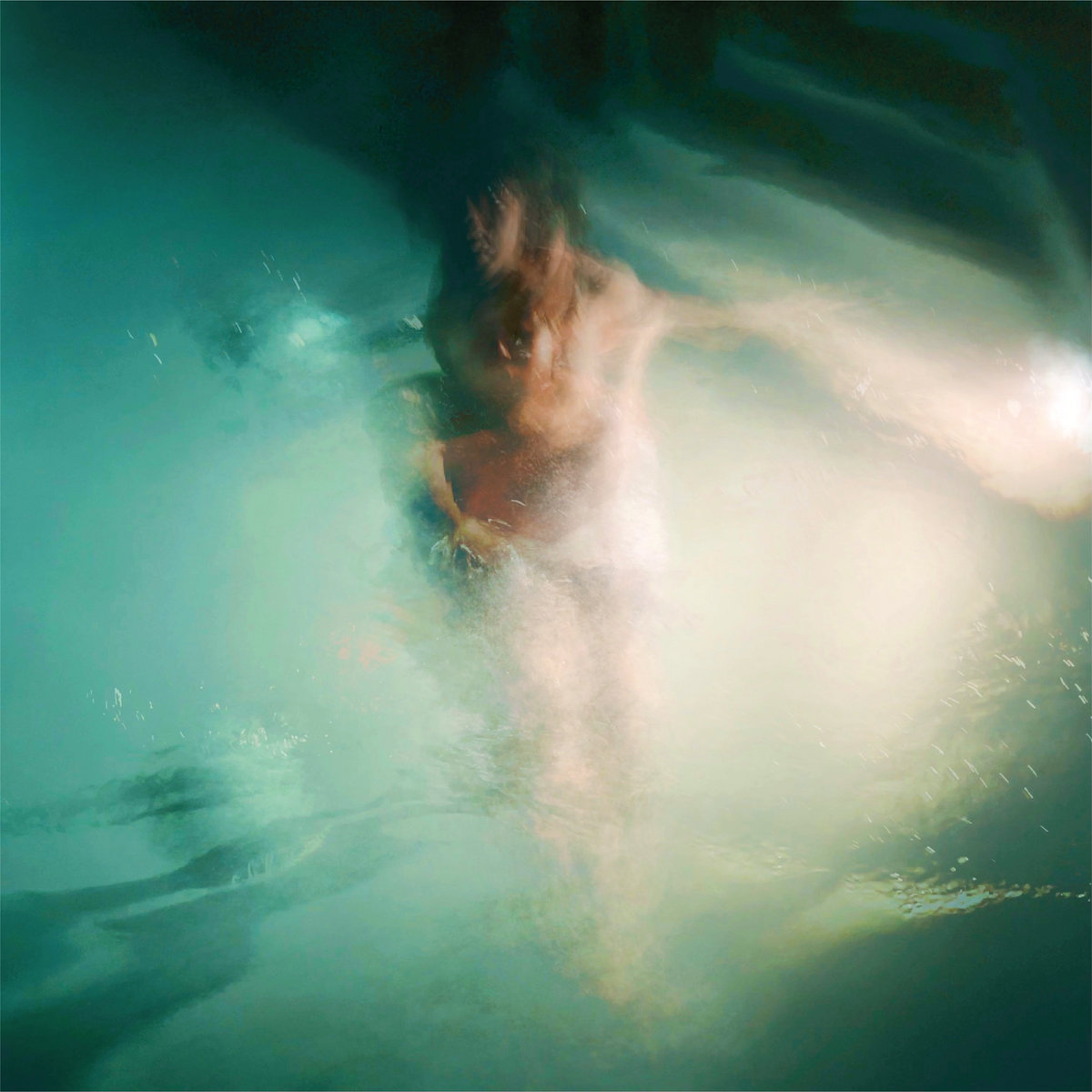 This latest full-length from Lucy Liyou is described as a "rumination on the double-sidedness of trauma and love." The title is a Korean idiom with multiple meanings ("could mean anything from fanciful daydreams to nightmarish terrors") and was chosen very deliberately, as Liyou is fascinated by what our dream lives say about us and our subconscious desires. Interestingly, Dog Dreams is billed as only Liyou's second album (she is quite a prolific artist), but apparently everything other than 2020's Welfare is considered either an EP or a collaboration. In some ways, Dog Dreams feels like a logical evolution from that debut, but I was surprised to find that Liyou moved away from her text-to-speech narratives, as I previously thought that element was absolutely central to her aesthetic. In their place, however, are elusive Robert Ashley-esque dialogues of murmuring voices hovering at the edge of intelligibility. While I expected to miss the playfully dark humor of those robotic voices quite a lot (I found them very endearing), the newly tender and human voices fit the dreamlike beauty of Dog Dreams' three sound collages quite nicely.
This latest full-length from Lucy Liyou is described as a "rumination on the double-sidedness of trauma and love." The title is a Korean idiom with multiple meanings ("could mean anything from fanciful daydreams to nightmarish terrors") and was chosen very deliberately, as Liyou is fascinated by what our dream lives say about us and our subconscious desires. Interestingly, Dog Dreams is billed as only Liyou's second album (she is quite a prolific artist), but apparently everything other than 2020's Welfare is considered either an EP or a collaboration. In some ways, Dog Dreams feels like a logical evolution from that debut, but I was surprised to find that Liyou moved away from her text-to-speech narratives, as I previously thought that element was absolutely central to her aesthetic. In their place, however, are elusive Robert Ashley-esque dialogues of murmuring voices hovering at the edge of intelligibility. While I expected to miss the playfully dark humor of those robotic voices quite a lot (I found them very endearing), the newly tender and human voices fit the dreamlike beauty of Dog Dreams' three sound collages quite nicely. Vandever's first solo album was recorded in three days and features her improvising on (mainly) trombone, effects, and voice. The improvised approach never shoves this music even an inch away from clarity, deftness, and emotional depth. Every piece feels fresh, abstract and dreamlike—as if she's channeling spirit voices from elsewhere—but all are restrained by the beguiling warmth, subtle tension, and comforting understatement of her sonorous playing. It's marvelous to hear the trombone burst, or maybe a more accurate descriptor would be slide, free of all genre association.
Vandever's first solo album was recorded in three days and features her improvising on (mainly) trombone, effects, and voice. The improvised approach never shoves this music even an inch away from clarity, deftness, and emotional depth. Every piece feels fresh, abstract and dreamlike—as if she's channeling spirit voices from elsewhere—but all are restrained by the beguiling warmth, subtle tension, and comforting understatement of her sonorous playing. It's marvelous to hear the trombone burst, or maybe a more accurate descriptor would be slide, free of all genre association. Letters From A Forest uses snippets of conversation, sung and spoken lyrics, simple guitar and piano lines, and (as Christian puts it) fake strings, to create what we can call collage atmospherics. The sum of these parts is a tender sounding album, crammed full of romanticized lyrics with a tough, honest, edge and a wondrous stream of consciousness style. When hearing tracks like the "The Ballad of Martin and Caroline,"—a tale of fates deeply entwined in a doomed love spiral—I felt like I was half napping or jet lagged in a spare room, overhearing friends babbling to one another about deceased acquaintances,musical heroes, old records,chance meetings, and the places where it all happened. As such, Letters is an ode to an array of magnificent and magnificently flawed people (some well known, others characters from local legend). It is a sketchbook of notes, more poetic than pathetic, with a palpably emotional tug, celebrating the contradictory nature of life.
Letters From A Forest uses snippets of conversation, sung and spoken lyrics, simple guitar and piano lines, and (as Christian puts it) fake strings, to create what we can call collage atmospherics. The sum of these parts is a tender sounding album, crammed full of romanticized lyrics with a tough, honest, edge and a wondrous stream of consciousness style. When hearing tracks like the "The Ballad of Martin and Caroline,"—a tale of fates deeply entwined in a doomed love spiral—I felt like I was half napping or jet lagged in a spare room, overhearing friends babbling to one another about deceased acquaintances,musical heroes, old records,chance meetings, and the places where it all happened. As such, Letters is an ode to an array of magnificent and magnificently flawed people (some well known, others characters from local legend). It is a sketchbook of notes, more poetic than pathetic, with a palpably emotional tug, celebrating the contradictory nature of life.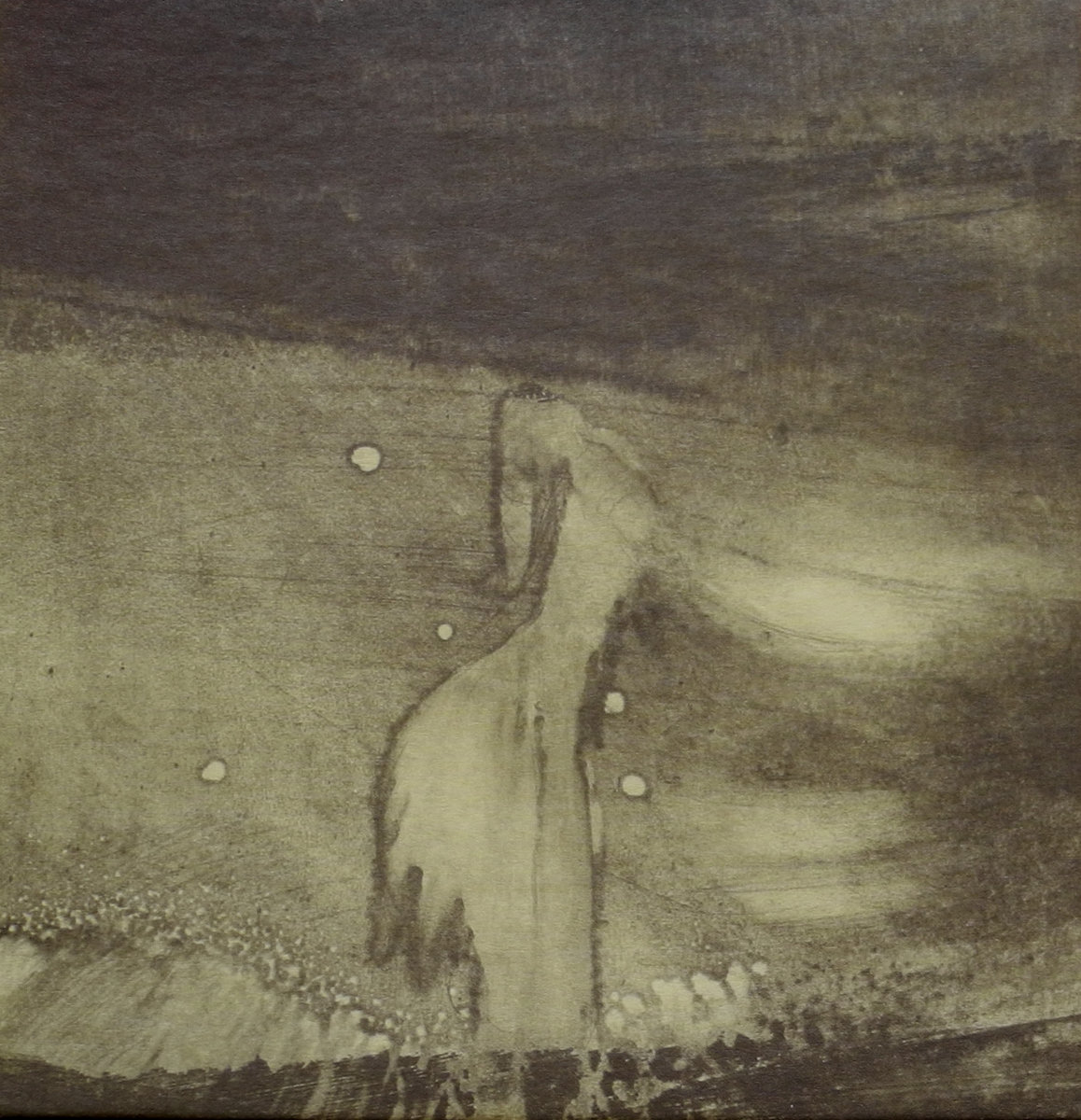 This is the second duo collaboration between Chalk and Rebilly, as the pair previously surfaced with L'état Intermédiaire back in 2018. Their shared history goes back to at least 2012 though, as they teamed up with Vikki Jackman for A Paper Doll's Whisper Of Spring. While details about Tsilla are less scarce than usual due to its release on An'archives rather than Chalk's famously terse Faraway Press imprint, I still know very little about Rebilly other than the fact that he plays the clarinet. Beyond that, I am unwilling to hazard any guesses about who is playing what here, as both artists' contributions are largely blurred into a painterly haze (not entirely unfamiliar territory for Chalk). Far more relevant than the instrumentation is the album's inspiration: engraver Cécile Reims, whose "denuded landscapes," "spiraling abstractions," and "unearthly radiance" may have inspired Chalk's visual art as well. If not, Reims is at least a kindred spirit and her collaborations with Hans Bellmer, Leonor Fini, and Salvador Dali probably make a decent enough consolation prize. Reims's deepest impact on Tsilla may have been upon the process rather than the outcome, however, as the pair set out to honor her "tender weaving of emotional complexity carved with the hand-held and simple tools of artisans" in their own way ("a similar transfiguration of base materials"). Regardless of how it was made, Tsilla is quite a unique album in the Chalk canon, as the best pieces evoke a beautifully nightmarish strain of impressionism.
This is the second duo collaboration between Chalk and Rebilly, as the pair previously surfaced with L'état Intermédiaire back in 2018. Their shared history goes back to at least 2012 though, as they teamed up with Vikki Jackman for A Paper Doll's Whisper Of Spring. While details about Tsilla are less scarce than usual due to its release on An'archives rather than Chalk's famously terse Faraway Press imprint, I still know very little about Rebilly other than the fact that he plays the clarinet. Beyond that, I am unwilling to hazard any guesses about who is playing what here, as both artists' contributions are largely blurred into a painterly haze (not entirely unfamiliar territory for Chalk). Far more relevant than the instrumentation is the album's inspiration: engraver Cécile Reims, whose "denuded landscapes," "spiraling abstractions," and "unearthly radiance" may have inspired Chalk's visual art as well. If not, Reims is at least a kindred spirit and her collaborations with Hans Bellmer, Leonor Fini, and Salvador Dali probably make a decent enough consolation prize. Reims's deepest impact on Tsilla may have been upon the process rather than the outcome, however, as the pair set out to honor her "tender weaving of emotional complexity carved with the hand-held and simple tools of artisans" in their own way ("a similar transfiguration of base materials"). Regardless of how it was made, Tsilla is quite a unique album in the Chalk canon, as the best pieces evoke a beautifully nightmarish strain of impressionism.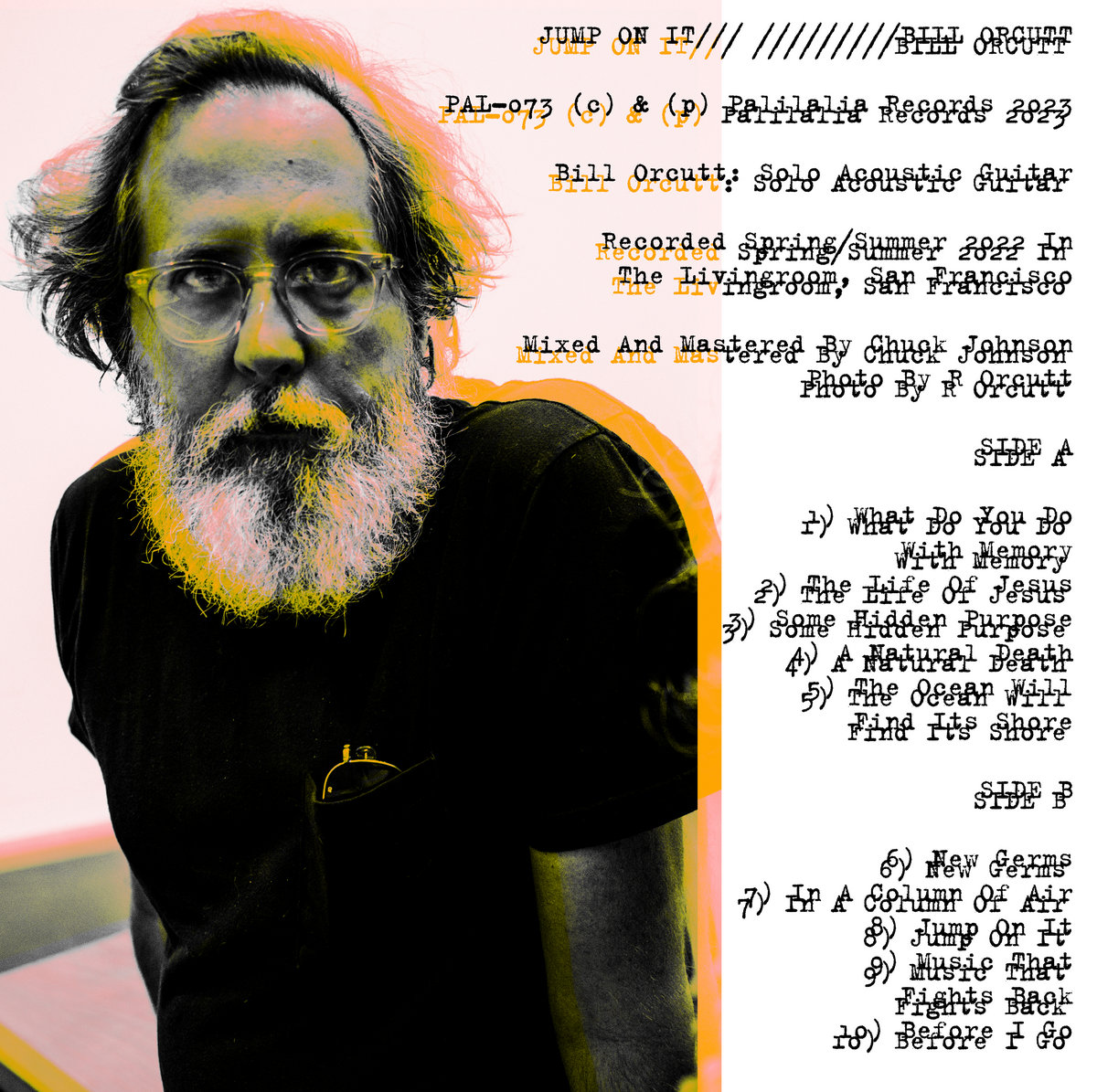 This latest LP from San Francisco-based guitar visionary Bill Orcutt is a spiritual successor of sorts to 2013's A History of Every One, as that was apparently his last solo acoustic guitar album. The resemblance between the two albums largely ends there, however, as Jump On It is as different from the deconstructed standards of History as it is from last week's Chatham-esque guitar quartet performance for NPR. While I do enjoy Orcutt's Editions Mego solo era quite a bit, there is no denying that his artistry has evolved dramatically over the last decade and his recent work definitely connects with me on a deeper level. In more concrete terms, Orcutt's work no longer resembles the choppy, convulsive, and possessed-sounding fare of History, as he has since reined in his more fiery, passionate impulses enough to leave more room for passages of tender, simple beauty. In fact, Jump On It might be the farthest that the balance has swung towards the latter, as the characteristic Orcutt violence is a rare presence in the collection of quietly lovely and spontaneous-sounding guitar miniatures.
This latest LP from San Francisco-based guitar visionary Bill Orcutt is a spiritual successor of sorts to 2013's A History of Every One, as that was apparently his last solo acoustic guitar album. The resemblance between the two albums largely ends there, however, as Jump On It is as different from the deconstructed standards of History as it is from last week's Chatham-esque guitar quartet performance for NPR. While I do enjoy Orcutt's Editions Mego solo era quite a bit, there is no denying that his artistry has evolved dramatically over the last decade and his recent work definitely connects with me on a deeper level. In more concrete terms, Orcutt's work no longer resembles the choppy, convulsive, and possessed-sounding fare of History, as he has since reined in his more fiery, passionate impulses enough to leave more room for passages of tender, simple beauty. In fact, Jump On It might be the farthest that the balance has swung towards the latter, as the characteristic Orcutt violence is a rare presence in the collection of quietly lovely and spontaneous-sounding guitar miniatures. Finally seeing the light of day after two years of production related delays, with the recordings dating back even longer than that, this collaboration between Daniel Burke (IOS) and the late Stefan Weisser (Z'EV) could almost be a time capsule, except the sound of it is entirely timeless. Recorded and mixed between 2008 and 2012, the two lengthy pieces that make up this self-titled album clearly bear the mark of both individuals, but mesh together beautifully in the very different sounding sides of the record.
Finally seeing the light of day after two years of production related delays, with the recordings dating back even longer than that, this collaboration between Daniel Burke (IOS) and the late Stefan Weisser (Z'EV) could almost be a time capsule, except the sound of it is entirely timeless. Recorded and mixed between 2008 and 2012, the two lengthy pieces that make up this self-titled album clearly bear the mark of both individuals, but mesh together beautifully in the very different sounding sides of the record. A 10" record rigidly divided into four different pieces (each mostly around four minutes in length), this new work from the enigmatic sounding, long-standing UK project is mostly centered around the same authoritarian lyrical elements, but each differs significantly in their compositional approach. A complex mix of styles define each piece, neither of which are too similar to another, but are unquestionably Contrastate, and showcases all of the unique sounds they are known for.
A 10" record rigidly divided into four different pieces (each mostly around four minutes in length), this new work from the enigmatic sounding, long-standing UK project is mostly centered around the same authoritarian lyrical elements, but each differs significantly in their compositional approach. A complex mix of styles define each piece, neither of which are too similar to another, but are unquestionably Contrastate, and showcases all of the unique sounds they are known for.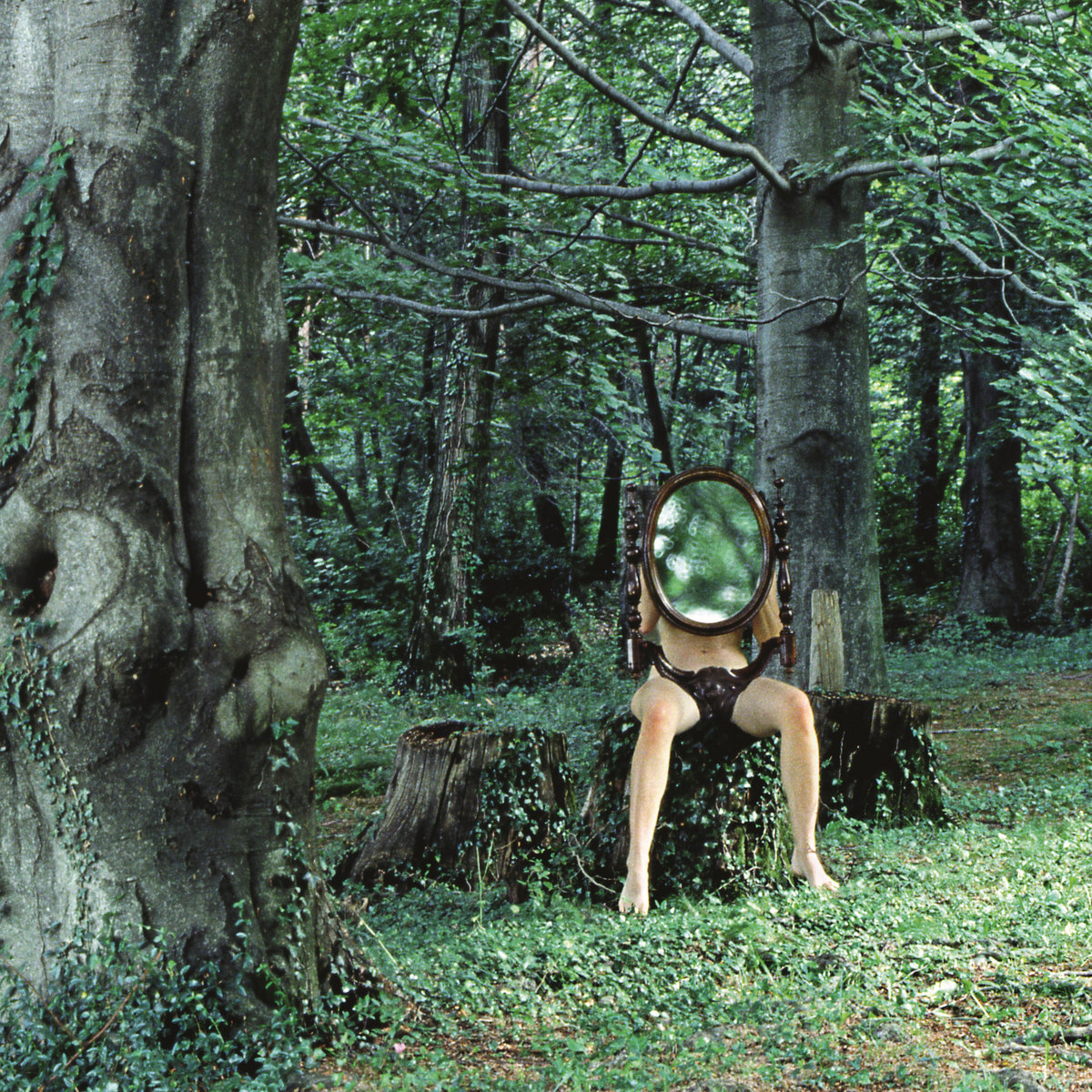 This eleventh album from Germany's Kammerflimmer Kollektief is not my first exposure to the project, but it did succeed in making me wonder why I have not been a passionate fan of their work before now. Admittedly, the idea of harmonium-driven free-form jazz/psychedelia is not quite my cup of tea on paper, which goes a long way towards explaining why I was so slow to embrace this project, yet the right execution can transform just about anything into gold and this foursome are extremely good at what they do. It also does not hurt that the Kammerflimmer gang have some intriguing and unusual inspirations, as they namecheck both Franz Mesmer and underheard German psychonauts The Cocoon in addition to the requisite nod to Can. Kammerflimmer Kollektief certainly assimilate those influences in a unique way though, as the best songs on Schemen sound like a killer post-rock/psych band blessed with an unusually great rhythm section and real talents for roiling guitar noise, simmering tension, and volcanic catharsis.
This eleventh album from Germany's Kammerflimmer Kollektief is not my first exposure to the project, but it did succeed in making me wonder why I have not been a passionate fan of their work before now. Admittedly, the idea of harmonium-driven free-form jazz/psychedelia is not quite my cup of tea on paper, which goes a long way towards explaining why I was so slow to embrace this project, yet the right execution can transform just about anything into gold and this foursome are extremely good at what they do. It also does not hurt that the Kammerflimmer gang have some intriguing and unusual inspirations, as they namecheck both Franz Mesmer and underheard German psychonauts The Cocoon in addition to the requisite nod to Can. Kammerflimmer Kollektief certainly assimilate those influences in a unique way though, as the best songs on Schemen sound like a killer post-rock/psych band blessed with an unusually great rhythm section and real talents for roiling guitar noise, simmering tension, and volcanic catharsis.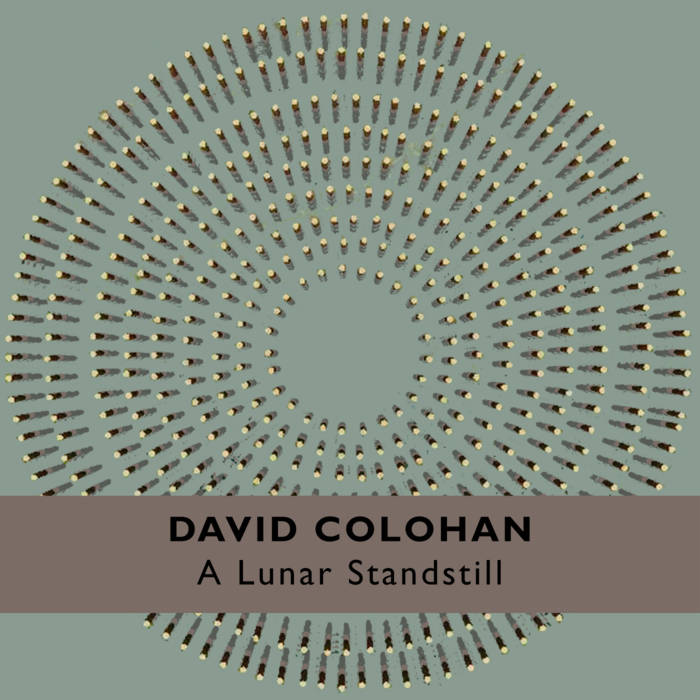 In the village of Stanton Drew, and dating from around 4,500 years ago, is the third largest complex of standing stone circles in England. David Colohan visited the site one rainy morning in early 2020 and was inspired by the mix of winter sunshine and eerie ancient atmosphere to create a record of his impressions. Fair enough, since people rarely send postcards from their travels anymore. Actually, the postcard analogy only works if it allows for someone designing a postcard when they get home, since Colohan's use of field recordings is minimal and he doesn't really create music in situ. He's done this before with other locations but A Lunar Standstill is easily his most consistent recording.
In the village of Stanton Drew, and dating from around 4,500 years ago, is the third largest complex of standing stone circles in England. David Colohan visited the site one rainy morning in early 2020 and was inspired by the mix of winter sunshine and eerie ancient atmosphere to create a record of his impressions. Fair enough, since people rarely send postcards from their travels anymore. Actually, the postcard analogy only works if it allows for someone designing a postcard when they get home, since Colohan's use of field recordings is minimal and he doesn't really create music in situ. He's done this before with other locations but A Lunar Standstill is easily his most consistent recording.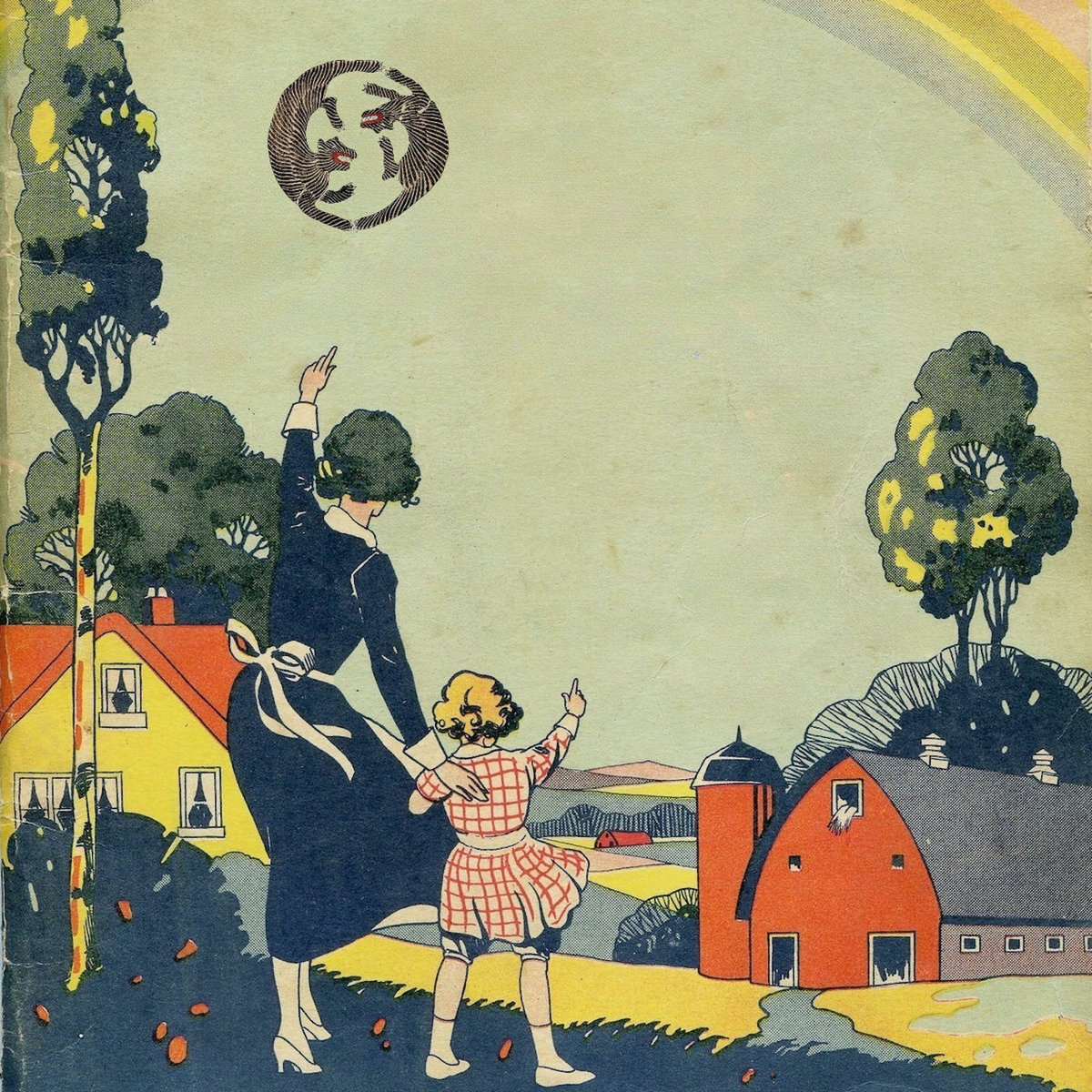 This latest release from husband and wife duo Zach & Denny Corsa appears to be their fifth full-length under the Nonconnah name (the duo were previously known as Lost Trail) and it is characteristically wonderful. As is the norm for Nonconnah, Unicorn Family was culled from several years of recordings featuring a host of eclectic collaborators (folks from Lilys, Half Japanese, Fire-Toolz, etc.) and those recordings have been expertly stitched together into beautifully layered and evocative soundscapes teeming with cool tape effects, thought-provoking samples, and killer shoegaze-inspired guitar work. In short, business as usual, but Nonconnah's business is consistently being one of the greatest drone projects on earth, so this is already a lock for one of my favorite albums of the year. Aside from the presence of a lovely lo-fi folk gem with actual singing, the only other notable departures from Nonconnah's existing run of gorgeous albums are shorter song durations than usual and the fact that the duo's samples have more of an eschatological bent. I suppose this album is an unusually focused and distilled statement as well, but that feels like a lateral move given how much I loved the sprawling immensity of Don't Go Down To Lonesome Holler.
This latest release from husband and wife duo Zach & Denny Corsa appears to be their fifth full-length under the Nonconnah name (the duo were previously known as Lost Trail) and it is characteristically wonderful. As is the norm for Nonconnah, Unicorn Family was culled from several years of recordings featuring a host of eclectic collaborators (folks from Lilys, Half Japanese, Fire-Toolz, etc.) and those recordings have been expertly stitched together into beautifully layered and evocative soundscapes teeming with cool tape effects, thought-provoking samples, and killer shoegaze-inspired guitar work. In short, business as usual, but Nonconnah's business is consistently being one of the greatest drone projects on earth, so this is already a lock for one of my favorite albums of the year. Aside from the presence of a lovely lo-fi folk gem with actual singing, the only other notable departures from Nonconnah's existing run of gorgeous albums are shorter song durations than usual and the fact that the duo's samples have more of an eschatological bent. I suppose this album is an unusually focused and distilled statement as well, but that feels like a lateral move given how much I loved the sprawling immensity of Don't Go Down To Lonesome Holler.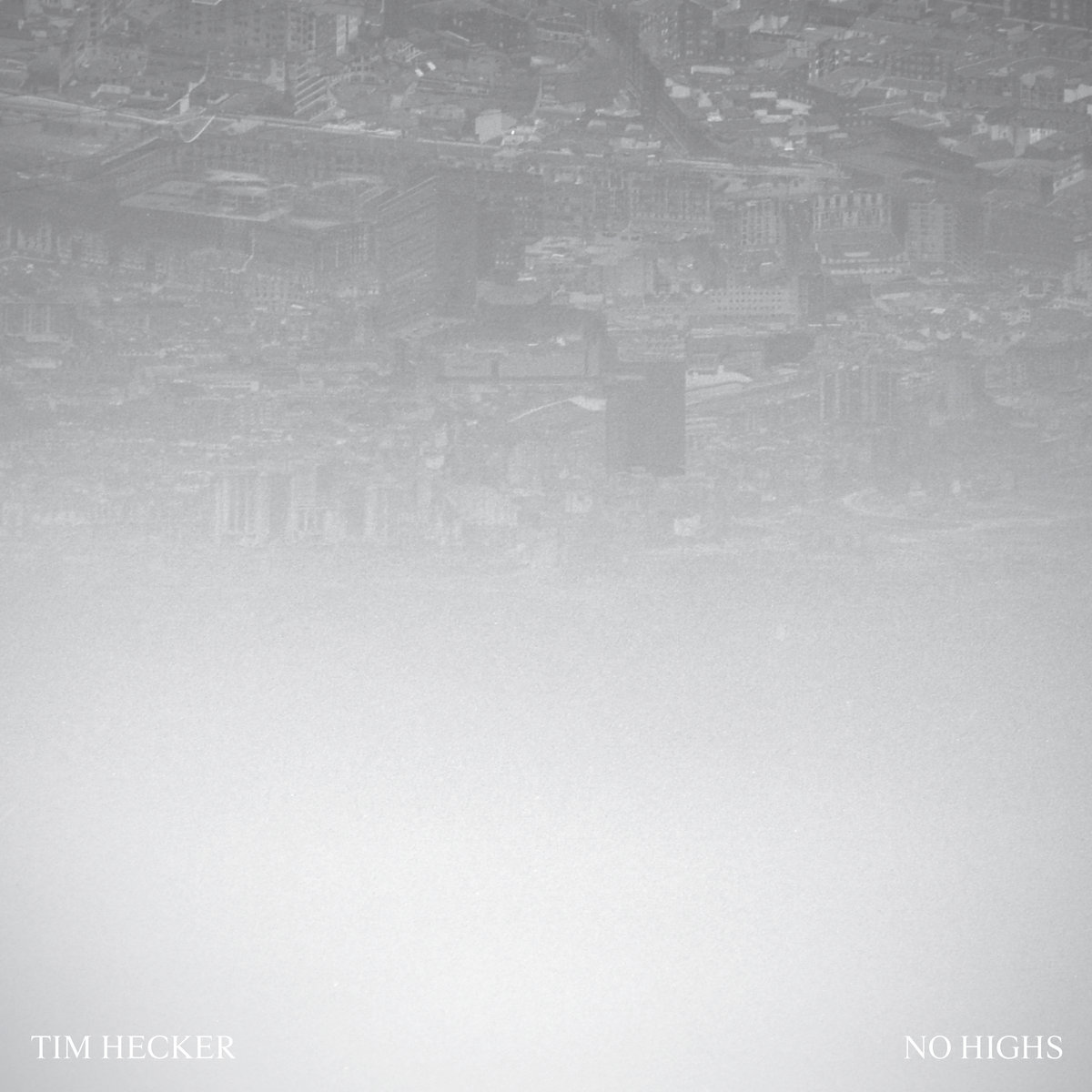 This latest opus from Tim Hecker is amusingly billed as "a beacon of unease against the deluge of false positive corporate ambient." Given the weighty themes of his previous albums, Hecker's actual inspiration presumably runs much deeper than that, yet the "beacon of unease" part of that claim may be more literal than it sounds, as one of the album's central features is described as "Morse code pulse programming." While I am not well-versed enough in Morse code to determine if Hecker's oddly timed rhythms are covertly incorporating text or a narrative into these warped and nightmarish soundscapes, the gnarled and harrowing melodies that accompany those erratic pulses are more than enough to make the album thoroughly compelling listening regardless. Aside from that, No Highs marks yet another significant creative breakthrough for a formidable artist hellbent on continual reinvention and bold evolution. While it is hard to predict whether or not No Highs will someday be considered one of Hecker's defining masterpieces or merely an admirable and unique detour, its handful of set pieces feel quite brilliant to me and I do not expect my feelings to change on that point..
This latest opus from Tim Hecker is amusingly billed as "a beacon of unease against the deluge of false positive corporate ambient." Given the weighty themes of his previous albums, Hecker's actual inspiration presumably runs much deeper than that, yet the "beacon of unease" part of that claim may be more literal than it sounds, as one of the album's central features is described as "Morse code pulse programming." While I am not well-versed enough in Morse code to determine if Hecker's oddly timed rhythms are covertly incorporating text or a narrative into these warped and nightmarish soundscapes, the gnarled and harrowing melodies that accompany those erratic pulses are more than enough to make the album thoroughly compelling listening regardless. Aside from that, No Highs marks yet another significant creative breakthrough for a formidable artist hellbent on continual reinvention and bold evolution. While it is hard to predict whether or not No Highs will someday be considered one of Hecker's defining masterpieces or merely an admirable and unique detour, its handful of set pieces feel quite brilliant to me and I do not expect my feelings to change on that point..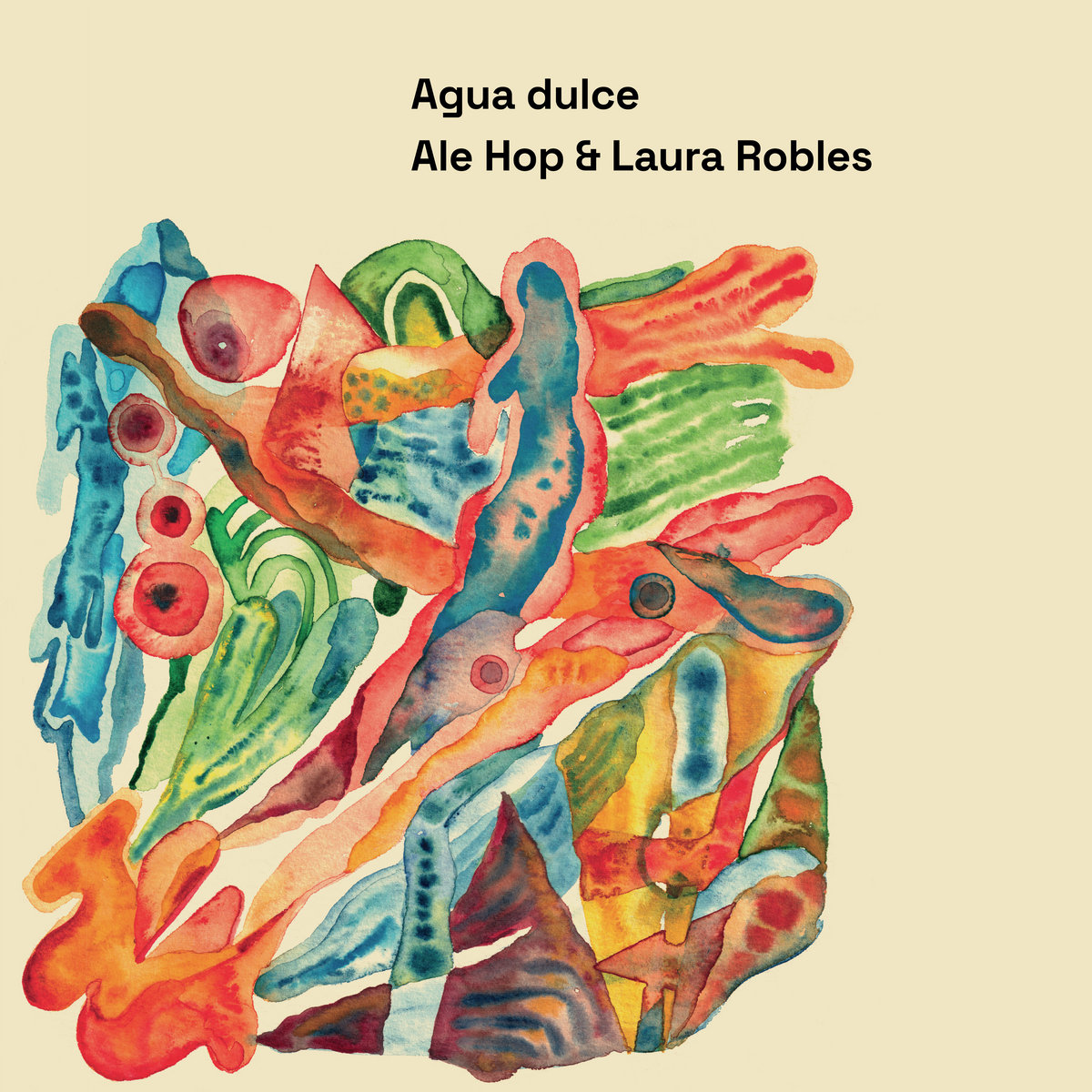 This is the debut collaboration between two Berlin-based Peruvian musicians and also marks my first exposure to percussionist Laura Robles. I am, however, reasonably familiar with the alien soundscapes of Ale Hop (Alejandra Cárdenas) and this union seems to have inspired some of her finest work to date. Notably, Robles is "reputed to be one of the best cajón players in Peru," which is useful context given how radically (yet lovingly) the pair deconstruct and reinvigorate the instrument ("a symbol of resistance, experimentation and transformation" in Peru). In more practical terms, that means that Cárdenas and Robles dramatically disrupt, distort, and repurpose traditional dance rhythms into a wild psychotropic mindfuck. In fact, it sometimes sounds like Robles recorded her parts alone as a freeform performance at an Ayahuasca ceremony or something, but the seemingly roving and divergent threads always come together in impressive fashion in the end. Amusingly, I would have thought that the enigmatically and erratically shifting rhythms of Agua dolce would be damn near impossible to dance to, yet these pieces apparently made quite a splash when the duo coupled with dancer/choreographer Liza Alpiźar Aguilar for the Heroines Of Sound festival. Whether or not that means that I would be a terrible choreographer is hard to say, however, as the finished album may have ultimately landed in far more lysergic territory due to Cárdenas' additional edits and production wizardry.
This is the debut collaboration between two Berlin-based Peruvian musicians and also marks my first exposure to percussionist Laura Robles. I am, however, reasonably familiar with the alien soundscapes of Ale Hop (Alejandra Cárdenas) and this union seems to have inspired some of her finest work to date. Notably, Robles is "reputed to be one of the best cajón players in Peru," which is useful context given how radically (yet lovingly) the pair deconstruct and reinvigorate the instrument ("a symbol of resistance, experimentation and transformation" in Peru). In more practical terms, that means that Cárdenas and Robles dramatically disrupt, distort, and repurpose traditional dance rhythms into a wild psychotropic mindfuck. In fact, it sometimes sounds like Robles recorded her parts alone as a freeform performance at an Ayahuasca ceremony or something, but the seemingly roving and divergent threads always come together in impressive fashion in the end. Amusingly, I would have thought that the enigmatically and erratically shifting rhythms of Agua dolce would be damn near impossible to dance to, yet these pieces apparently made quite a splash when the duo coupled with dancer/choreographer Liza Alpiźar Aguilar for the Heroines Of Sound festival. Whether or not that means that I would be a terrible choreographer is hard to say, however, as the finished album may have ultimately landed in far more lysergic territory due to Cárdenas' additional edits and production wizardry. This is my first exposure to this UK-based collective centered around Gavin Miller (worriedaboutsatan) and Sophie Green (formerly of Her Name is Calla), but they have been fitfully releasing albums for more than a decade now. Their last major release, Scavengers, was back in 2016 on Time-Released Sound, so Eyes Like Pools both ends a lengthy hiatus and marks the collective’s first appearance on Athens’ sound in silence label. Much like Miller’s worriedaboutsatan project, this latest statement from Marta Mist occupies a vaguely cinematic stylistic niche where ambient and post-rock blur together, but Eyes Like Pools parts ways from worriedaboutsatan by swapping out electronic beats for Green’s achingly lovely violin melodies. While the more ambient side of Marta Mist’s current vision is appropriately warm and immersive, those pieces tend to be quite brief and the more substantial string-driven pieces are the true heart of the album (and it is a fiery heart indeed).
This is my first exposure to this UK-based collective centered around Gavin Miller (worriedaboutsatan) and Sophie Green (formerly of Her Name is Calla), but they have been fitfully releasing albums for more than a decade now. Their last major release, Scavengers, was back in 2016 on Time-Released Sound, so Eyes Like Pools both ends a lengthy hiatus and marks the collective’s first appearance on Athens’ sound in silence label. Much like Miller’s worriedaboutsatan project, this latest statement from Marta Mist occupies a vaguely cinematic stylistic niche where ambient and post-rock blur together, but Eyes Like Pools parts ways from worriedaboutsatan by swapping out electronic beats for Green’s achingly lovely violin melodies. While the more ambient side of Marta Mist’s current vision is appropriately warm and immersive, those pieces tend to be quite brief and the more substantial string-driven pieces are the true heart of the album (and it is a fiery heart indeed). William Basinski recorded this music during his time living in San Francisco, when he presumably visited Clocktower Beach. Considering that Basinski once created On Time Out Of Time—music in tribute to quantum entanglement and the theories of Einstein and Rosen, and Einstein, Rosen, and Podolsky, using source recordings of the 1.3 billion year old sounds of two distant massive black holes—undoubtedly the subject matter of The Clocktower at the Beach is one of his more straightforward creations. Fair enough, it is one of his earliest drone pieces, yet his methodology is as intriguing as anything he's done, and (most important of all) the music is a memorable journey into the sadness of things. Back to "mono no aware," then.
William Basinski recorded this music during his time living in San Francisco, when he presumably visited Clocktower Beach. Considering that Basinski once created On Time Out Of Time—music in tribute to quantum entanglement and the theories of Einstein and Rosen, and Einstein, Rosen, and Podolsky, using source recordings of the 1.3 billion year old sounds of two distant massive black holes—undoubtedly the subject matter of The Clocktower at the Beach is one of his more straightforward creations. Fair enough, it is one of his earliest drone pieces, yet his methodology is as intriguing as anything he's done, and (most important of all) the music is a memorable journey into the sadness of things. Back to "mono no aware," then.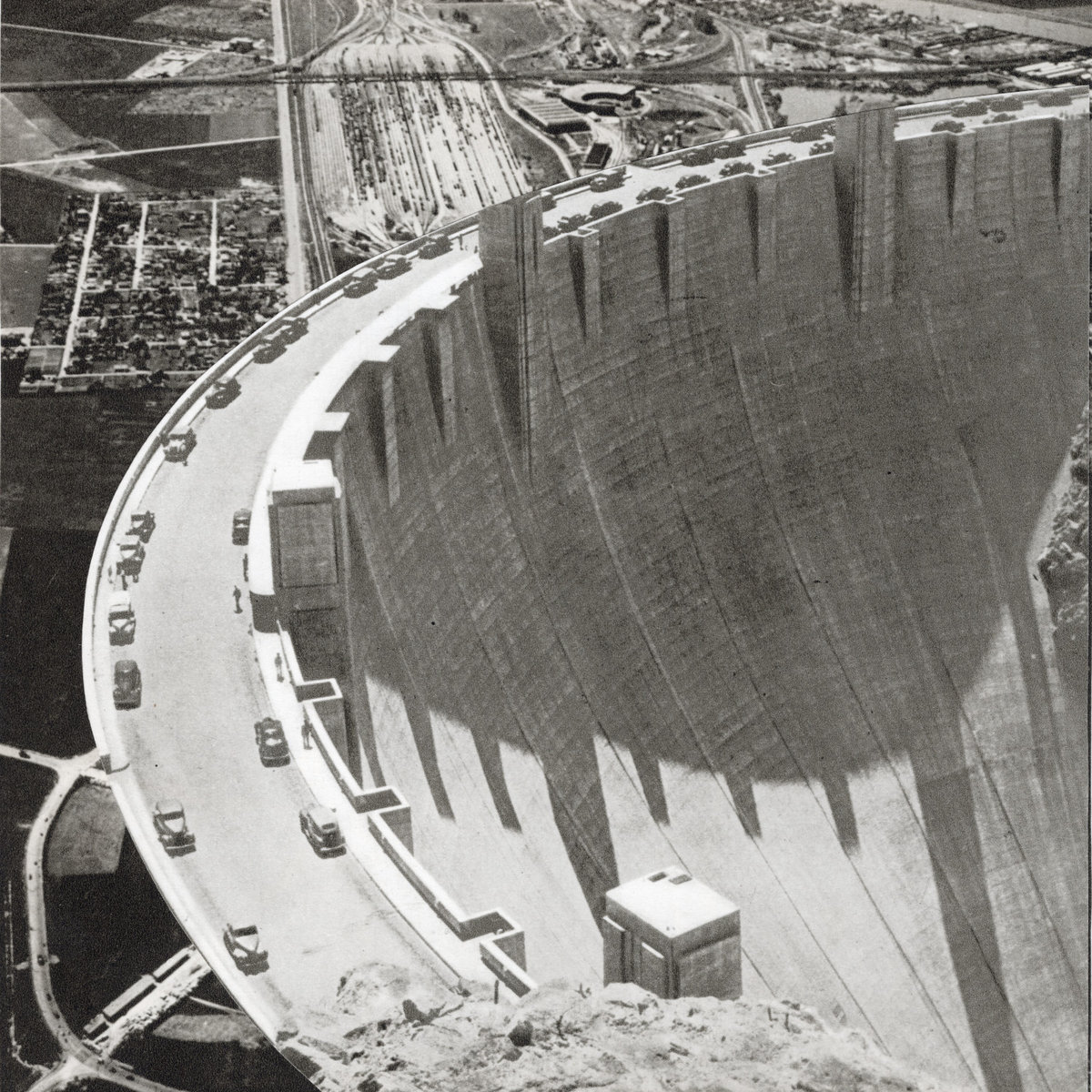 This is apparently the twelfth solo album from Berlin-based double bassist Mike Majknowski, but—far more significantly—it is also the follow up to 2021's killer Four Pieces and is very much in the same vein. That vein lies somewhere between loscil-style dubwise soundscapes and the austere sophistication of classic Tortoise or early Oren Ambarchi, which is certainly a fine place to set up shop, but that is merely the backdrop for some truly fascinating forays into sustained, simmering tension and exquisitely slow-burning heaviness. Unsurprisingly, I am like a moth to a flame when it comes to longform smoldering minimalism and I can think of few artists who can match Majknowski's execution, as he consistently weaves magic from little more than a few moving parts and a healthy appreciation for coiled, seething intensity.
This is apparently the twelfth solo album from Berlin-based double bassist Mike Majknowski, but—far more significantly—it is also the follow up to 2021's killer Four Pieces and is very much in the same vein. That vein lies somewhere between loscil-style dubwise soundscapes and the austere sophistication of classic Tortoise or early Oren Ambarchi, which is certainly a fine place to set up shop, but that is merely the backdrop for some truly fascinating forays into sustained, simmering tension and exquisitely slow-burning heaviness. Unsurprisingly, I am like a moth to a flame when it comes to longform smoldering minimalism and I can think of few artists who can match Majknowski's execution, as he consistently weaves magic from little more than a few moving parts and a healthy appreciation for coiled, seething intensity. I can hardly think of anything better for Aguirre to have reissued on vinyl than Morgan Fisher's collaboration with Lol Coxhill, originally released in1980 on Fisher's short-lived Pipe label. More than four decades later Slow Music is a rare phenomenon: a masterpiece which truly sounds like one. It remains an ambient landmark, an elemental work of art and imagination, and a painstaking labor of love.
I can hardly think of anything better for Aguirre to have reissued on vinyl than Morgan Fisher's collaboration with Lol Coxhill, originally released in1980 on Fisher's short-lived Pipe label. More than four decades later Slow Music is a rare phenomenon: a masterpiece which truly sounds like one. It remains an ambient landmark, an elemental work of art and imagination, and a painstaking labor of love.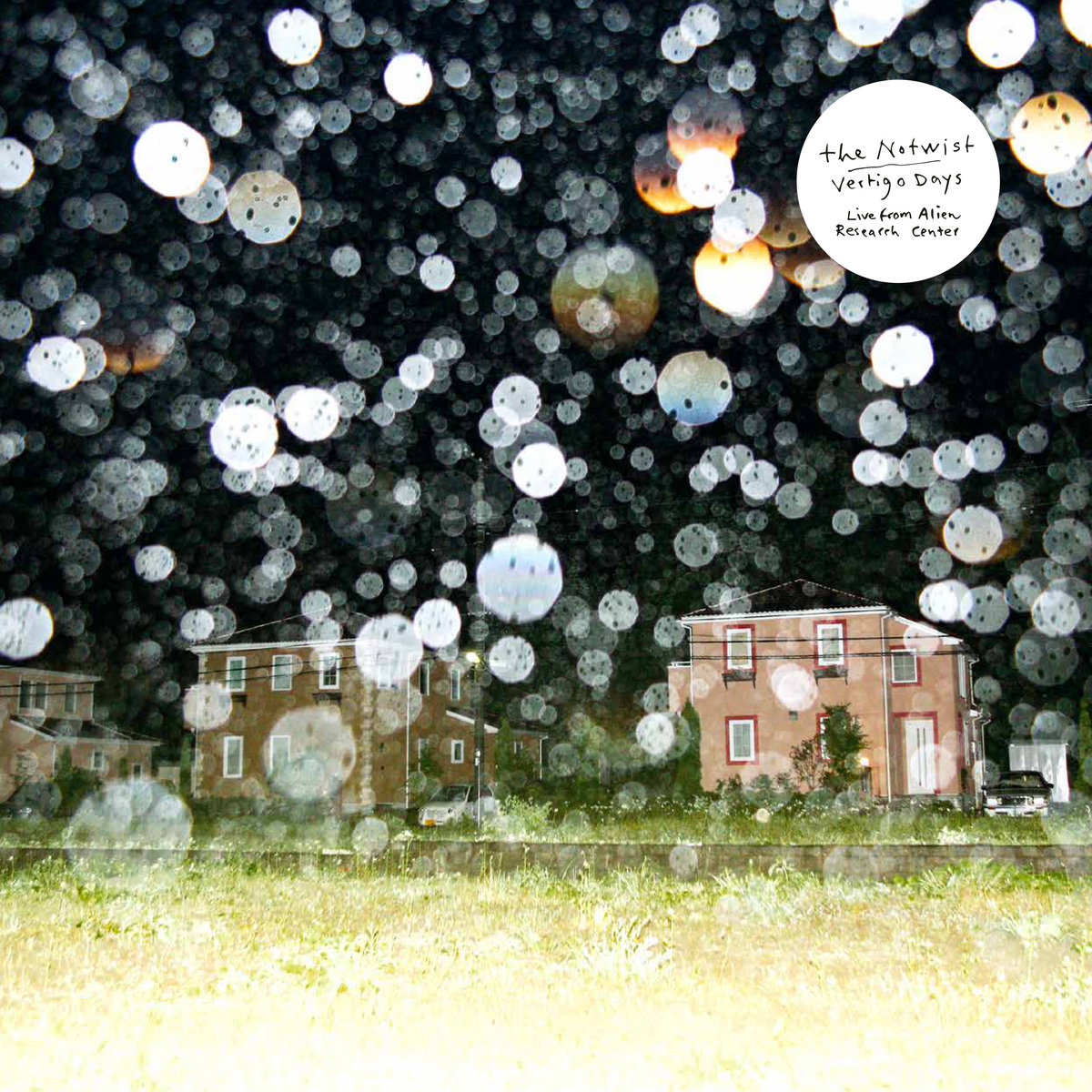 The Notwist tend to regard their live shows as launchpads where they can blast off from their studio albums on voyages of discovery. Live from Alien Research Center is a terrific document of that process, as the group re-explore the contents of Vertigo Days; their 2021 release which featured an array of guests from Angel Bat Dawid to Juana Molina. 2021-23 might seem a speedy recycling of the same material, but there is valuable quality of freedom and looseness in these live versions; stretched out and stitched together in the kosmische style.
The Notwist tend to regard their live shows as launchpads where they can blast off from their studio albums on voyages of discovery. Live from Alien Research Center is a terrific document of that process, as the group re-explore the contents of Vertigo Days; their 2021 release which featured an array of guests from Angel Bat Dawid to Juana Molina. 2021-23 might seem a speedy recycling of the same material, but there is valuable quality of freedom and looseness in these live versions; stretched out and stitched together in the kosmische style.
